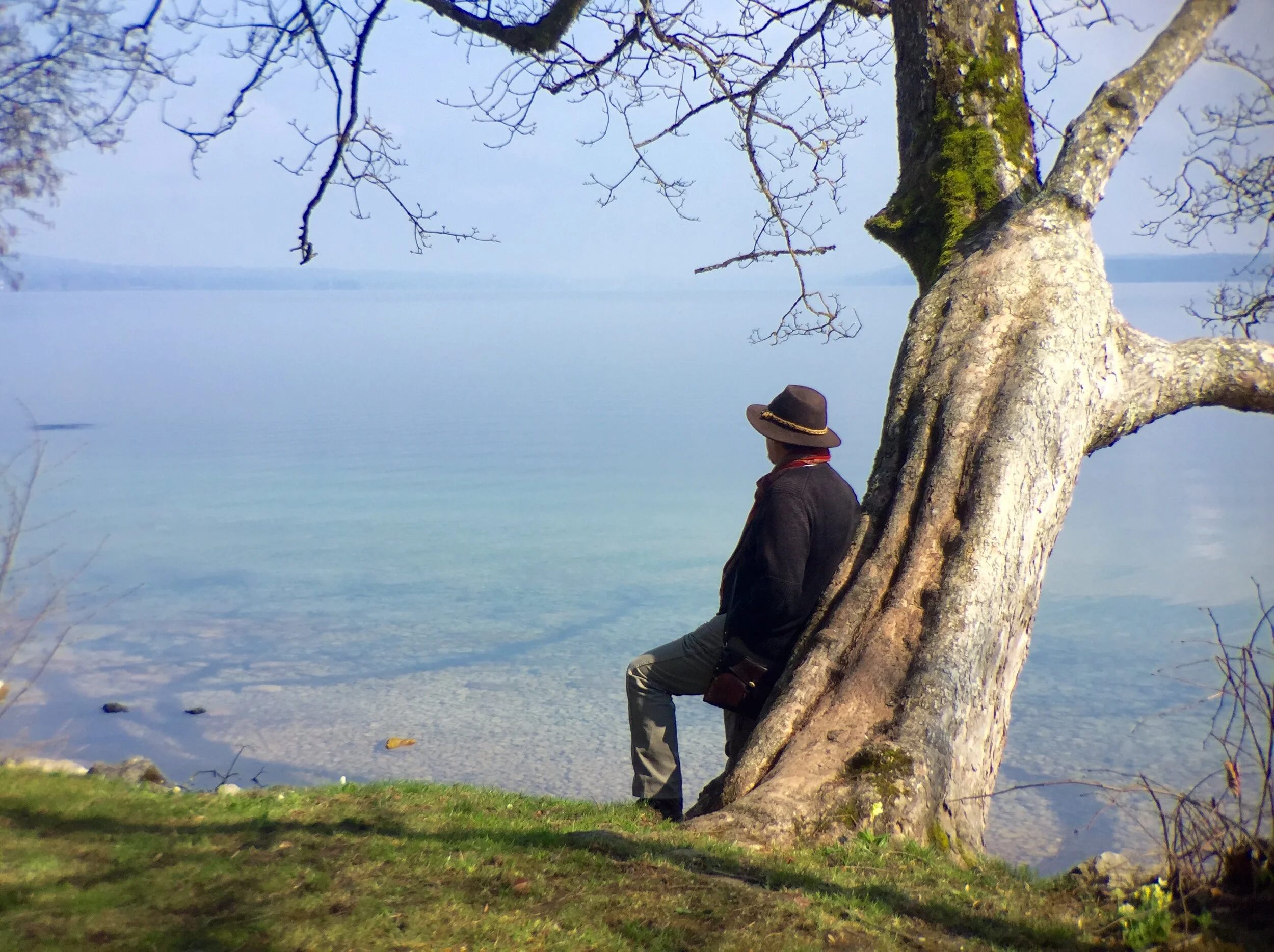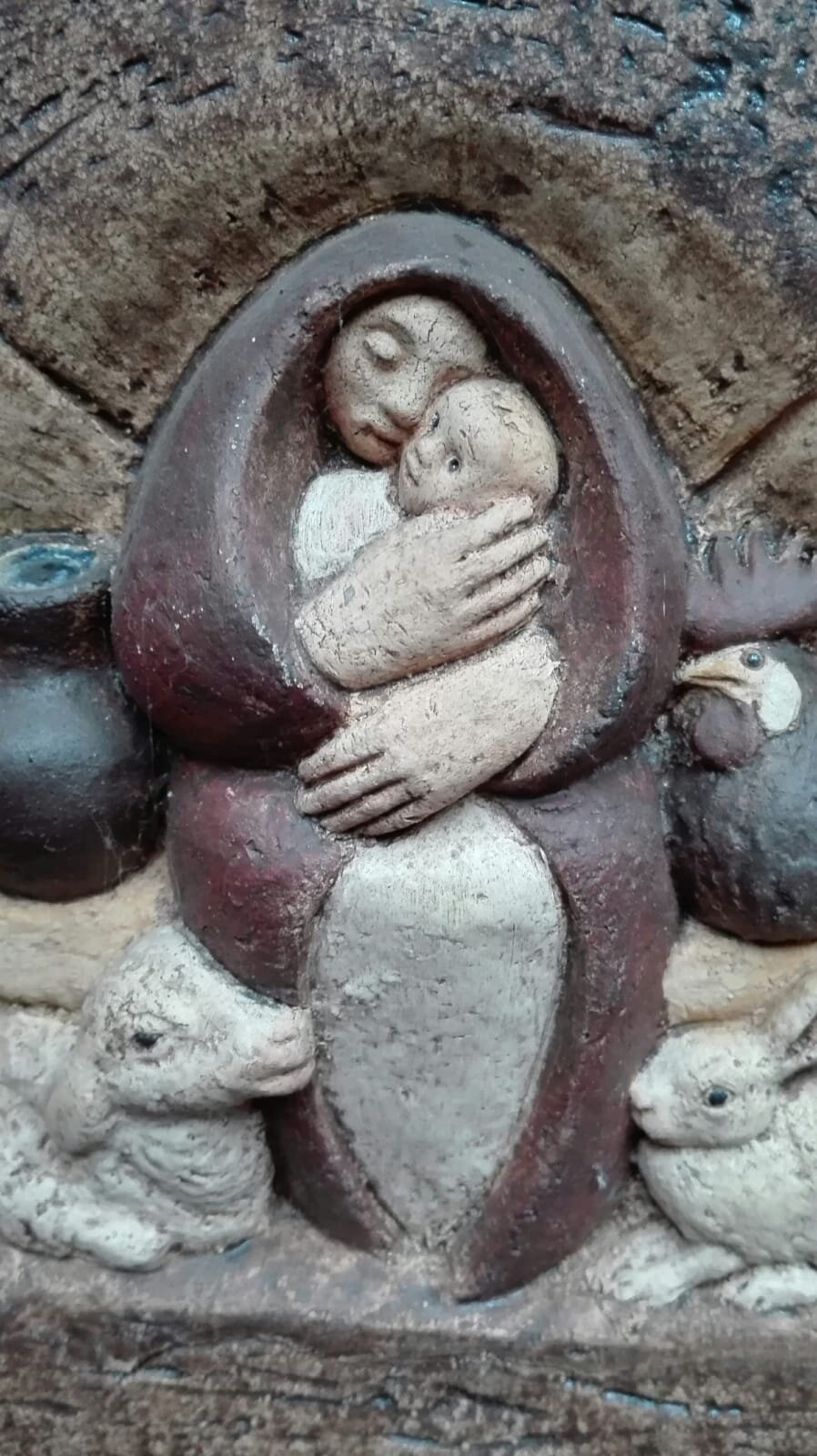“our ability for true encounter starts with practicing solitude”
One of my fondest memories of shared solitude was a contemplative cloister retreat we led at St. John's Abbey, MN a couple of years ago. When we arrived at the meeting place on the second morning of our retreat we found our guests already sitting by and with each other, silently, while reading and meditating. There was such a beautiful, quiet, energy of community in the room, of anticipation and togetherness while still being alone with one's own thoughts.
Our culture has not much interest in this sort of shared solitude, much less for solitude. Every time spot has to be filled, every box checked, every line written, every word said. And then comes the raging pandemic which forces us into time with ourselves that we have not practiced and that overwhelms us quickly. We do not know anymore how to live with ourselves, or with each other. Solitude seems rather a burden than a gift.
Perhaps because of this, many existential writers like Hesse, Kierkegaard or Buber, as well as spiritual leaders such as Rumi, Benedict or Bonhoeffer, are deeply convinced that our ability for true encounter starts with practicing solitude. Jesus himself has retreated into solitude to pray and meditate.
Our burden and bliss with solitude has probably never been more beautifully said than by the German poet Rainer Maria Rilke. In a letter to a young poet who struggled with his loneliness around Christmas time, he writes the following:
"My dear Mr. Kappus,
I don't want you to be without a greeting from me when Christmas comes and when you, in the midst of the holiday, are bearing your solitude more heavily than usual. But when you notice that it is vast, you should be happy; for what (you should ask yourself) would a solitude be that was not vast; there is only one solitude, and it is vast, heavy, difficult to bear, and almost everyone has hours when he would gladly exchange it for any kind of sociability, however trivial or cheap, for the tiniest outward agreement with the first person who comes along, the most unworthy. But perhaps these are the very hours during which solitude grows; for its growing is painful as the growing of boys and sad as the beginning of spring. But that must not confuse you.
What is necessary, after all, is only this: solitude, vast inner solitude. To walk inside yourself and meet no one for hours - that is what you must be able to attain. To be solitary as you were when you were a child, when the grownups walked around involved with matters that seemed large and important because they looked so busy and because you didn't understand a thing about what they were doing...."
It is often times of crisis or dislocation which point us to such "vast inner solitude," that call us to step out of the business of our daily routine, of the noisy busyness with which we distract ourselves. These times call us to "walk inside ourselves" in order to find what still lies hidden. This being alone with oneself is very different from being lonely. As with all experience from the inner realm, it cannot be described in objective language. And it is slippery and dangerous. Being alone can lead the unwary into loneliness, melancholy and despair; but learning to be alone the right way can also make a way to heal our deepest loneliness.
Dietrich Bonhoeffer has remarked on this "dialectical character" of solitude in his book Living Together: Only in community do we learn to be rightly alone and only through aloneness do we learn to live rightly in community. And he advises us to grant each other spaces where we can practice solitude. “The day together” will be unfruitful without “the day alone” – after a time of quiet we will meet each other in a different and fresh way again.
Practicing Solitude
We live in challenging times, thrown back more than usual onto the small communities of our household. You may have suddenly found yourself becoming a caretaker or a parent again. Or found yourself lonely and longing for someone with whom to share your solitude.
So now more than ever we need to practice the art of solitude and especially to learn how to share places of solitude. Just as I have described the experience of shared solitude at our retreat you might know such moments from your own household, when every one shares one space but still leaves each other alone to their pondering. It is good, even necessary, to be quiet with each other. Not every time slot needs to be filled, structured or planned. As our toddler forgets herself in quiet play we are called to “forget” ourselves in order to become present to ourselves.
But this requires practice. And this practice, like any other spiritual practice, requires forbearance, with others and with yourself. Sharing life and space around the clock, even just with yourself, with little else to go on, is hard. And how does one acquire forbearance ? Solitude.
As a mother of a still nursing toddler, I just cannot do things as I have before. My nerves feel raw, my patience fragile, my resources thin, I have lost the postmodern ability of multi tasking. That does not always make for spiritual or even polite encounters. I am made constantly aware of how much I need time alone, solitude. And I am grateful to know I am not alone in this.
So let us seek and practice forbearance. With ourselves and with others. Let us find space, and grant space, for solitude and quiet. Let us cloister, together…
Questions to ponder
When you read Rilke's lines on the mixed appearances of solitude, what experiences or times of your own life come to mind? When has solitude knocked at your door last? What or whom have you met when you walked the last time "inside yourself"? Can you find an image or line for this encounter? How can this memory encourage you to try again?
A Blessing
May you find courage
to walk inside yourself
may you find rest
in the stillness of your heart
pondering new beginnings
and may your tears be like the first rain
after a long winter season
foretelling the coming spring.
AF
This post is part of our 12 Days of Christmas Series 2020/21: Cradling Hope, a Contemplative Journey towards the heart of Christmas. You can still enroll and follow along. To enter our virtual gathering space click here. To share your thoughts with us, write us here or comment below. To offer your gift, click here. If you are looking for personal consultation, visit our PathFinder.
Peace and Blessings, Almut & Chuck




